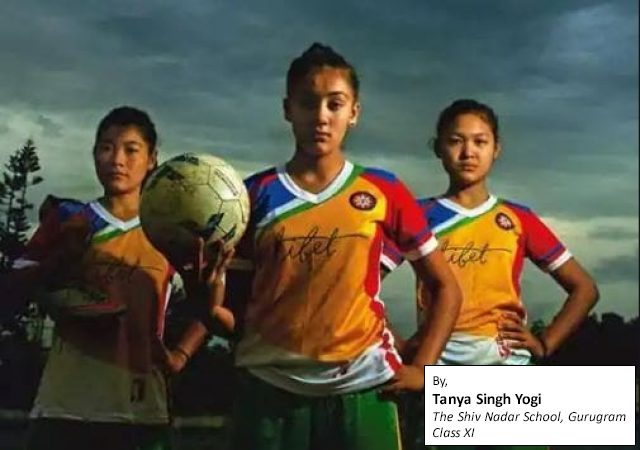Football is by far the most popular sport in the world and it is estimated that more than half the world’s population considers themselves to be football fans. India being more than one sixth of the world’s population still does not have a long history with the sport. Over the last few years, men’s football has gained immense popularity among the youth, unfortunately the same is the not case with women’s football. Although the situation is slowly catching the administrator’s attention, the work being put in to improve the situation is excruciating slow and inadequate. Any athlete representing their country should receive immense support from their country’s fans, unfortunately women’s football is often ignored.
The indifference towards Indian women’s football can be attributed to a few major reasons. Out of the total FIFA grant given to Indian Football, only 15% of the funds are used for the development and management of women’s football. This is in fact the only capital being infused. Lack of funds leads to hardly any national tournaments or even practice matches. There are almost no sponsors contributing towards the development of Indian women’s football. Even though the Indian men’s football team is ranked far lower in the worldwide ranking as compared to the women’s team.
Athletic patriarchy, gender bias, discrimination, and age-old cultural norms contribute heavily towards the under development of women’s sports in India. Young girls are generally discouraged from taking up sports not only in rural India but also in urban areas. The root cause of the problem begins at home, whether we teach the youth to believe in themselves and that they can use sports to improve their general development.
The systemic discrimination and bias exist not just in sports but in other related professional fields as well. There is lack of opportunities for women in the sports administration or coaching fields as well. There are only a handful women in a place of authority in sports administration. The under representation by women in sports administration leads to a vicious and endless circle leading to under participation as well. This leaves women’s football almost entirely in the hands of administrations who may not appreciate or have the correct perspective for women’s sports.
The state football federations in India are highly disorganised. Only a handful of national and state or district level tournaments are organized each year. With a lack of any consistency in the annual tournament schedule, player motivation and interest wanes very quickly. Due to fewer matches the players are not exposed to enough match practice and begin to lose interest quickly thereby dropping out of the sport eventually. The interest and love of the game is only sustained through the spirit of competition and hunger for challenge. More matches and leagues help in promoting the sport and will undoubtedly improve Indian women’s football drastically. Hopefully with interest the young girls can even dream of making a career in football.
One of the major reasons behind fewer tournaments is the lack of infrastructure and funding. As mentioned, the amount of capital going towards the infrastructure is almost abysmal. India has tropical climate, and this does not allow for year-round outdoor practice and competition. During the monsoon season, the football fields are unusable due to water logging and indoor training facilities would certainly make a remarkable difference in player improvement.
Despite the inherent challenges, Indian women’s football has exceeded expectations and achieved tremendous success. They are ranked higher as compared to the men’s football raking in FIFA. The All India Football Federation (AIFF) has taken several steps towards promoting women’s football with the Women’s Under-17 World Cup being hosted in India next year.
There is still a lot of effort required to improve women’s football starting at the grass-roots level. The organisers and administrators need to take proper safety and security measures for girls, improve playing infrastructure, and create a pool of trained and certified coaches. Media exposure and promotion amongst youth can give the sport the attention and popularity it deserves. Men’s and women’s teams should get parity in training and renumeration. Football is a sport for all and there should be no bias or discrimination based on gender. Use of social media can help promote the sport amongst youth and improve the popularity Football deserves in a country like India which has no shortage of talent or passion for the sport.
by,
Tanya Singh Yogi
The Shiv Nadar School, Gurugram
Class XI




